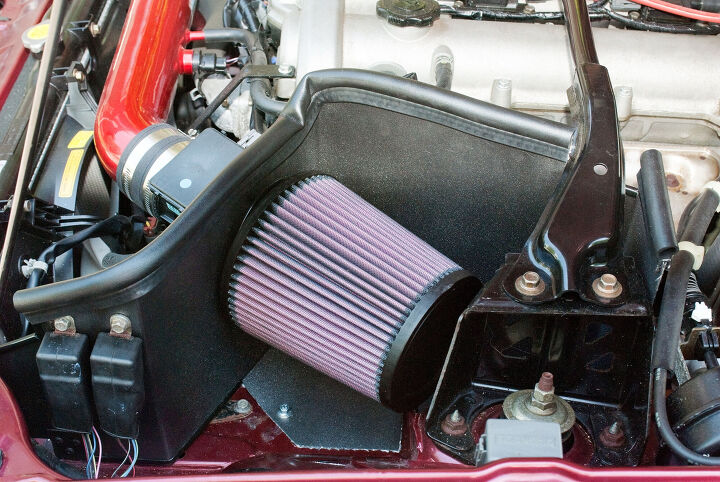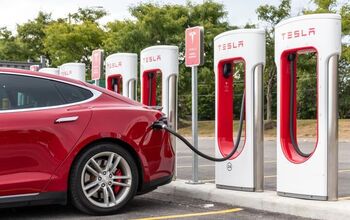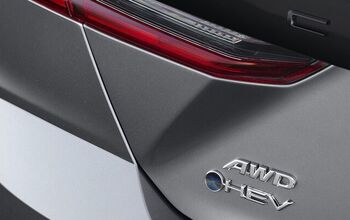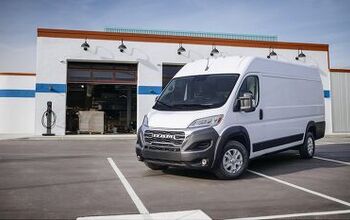Do Cold Air Intakes Really Work?

Cold Air Intakes (CAIs) are among the most popular modifications enthusiasts make to their cars. Of course, like anything popular, there’s a fair bit of discourse surrounding them. Claims range from big horsepower gains on some cars to cool noises and improved aesthetics. So, do they really work?
The idea behind them is relatively simple, altering one of the three main ingredients needed for combustion (air, fuel, and spark). Colder air is more efficient for combustion, which should net you a cleaner bang. The colder and cleaner the air combustion is produced with, the more power an engine is theoretically capable of making. A cold air intake produces a richer air-fuel ratio, which makes a bigger bang. The bigger bang in turn pushes down on the piston and crankshaft harder, which moves the car along faster, in very basic terms.
Thankfully modern car ECUs are certainly smart enough to figure out that they’ve got more air to work with. For this simple reason alone, a CAI really does work. Of course, it’s important to keep in mind that how well they work will vary drastically based on your car, it’s engine, and whether you’ve got any other modifications. In fact, manufacturers of aftermarket intakes, like Cobb, often design their software upgrades to work best with a CAI. This is obviously a smart business move, but if the ECU is able to work better thanks to the filter, then who cares? The bonus here is that Cobb makes intakes for just about every car you can think of, as well as software tunes that are optimized for them.
A new intake will hopefully earn its name by moving the source of your car’s air supply away from hot engine bits. Again, this largely depends on what kind of car you have and where your factory intake track runs. For example, we owned a VW GTI for a while that routed the intake to the turbo directly over the turbocharger, meaning the heat from the turbo poured directly onto an intake pipe. Cold air no more. The solution was new routing provided by one of a few manufacturers. K&N is another extremely prolific name in the industry that makes intakes for any variety of car or truck. Generally, manufacturers have taken on a more hybridized approach in recent years, utilizing the best parts of the factory intake path and making alterations where gains can be made.
Another potential positive to a CAI is maintenance. K&N for example, makes lifetime washable filters. Some brands don’t from the factory, and you’ll have to insert a new disposable filter every few service intervals. With a modified intake, you’re able to save yourself this expense later by paying a bit more up front. Both Cobb and K&N make a replacement filter for a number of makes that don’t require a new intake system too.
There’s also weight to consider. Depending on your budget, you can find exotic materials like carbon fiber in aftermarket intakes. While the majority of intake systems are made of plastic, less weight, and a simplified intake track can result in a noticeable amount of weight off the nose of your car. The majority of users won’t notice the loss of 3-4 pounds or so off the nose of a car, someone with an ultra-light track car using a new intake system might.
At a superficial level, it’s almost arguable that improvement in sound is a benefit worth its own CAI. The simple fact is that most buyers (even of enthusiast cars) don’t want to hear every bit of machine working in front of them. But for those that do, a CAI is usually noticeably louder than your stock intake. On some turbocharged cars, you might even be producing some pigeon coos from the front of the car with one. Regardless of the reason, a cold air intake is certainly worth a look if you’re trying to find a way to get just a little bit more oomph out of your car.

Chase is an automotive journalist with years of experience in the industry. He writes for outlets like Edmunds and AutoGuide, among many others. When not writing, Chase is in front of the camera over at The Overrun, his YouTube channel run alongside his friend and co-host Jobe Teehan. If he's not writing reviews of the latest in cars or producing industry coverage, Chase is at home in the driver's seat of his own (usually German) sports cars.
More by Chase Bierenkoven


































Comments
Join the conversation